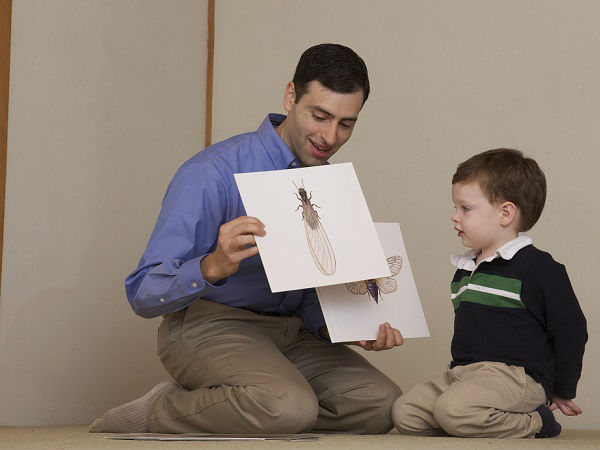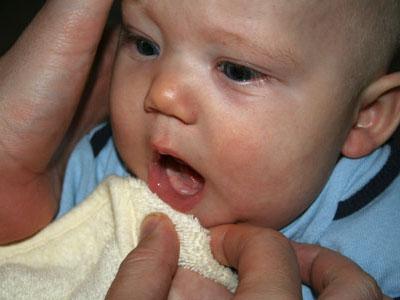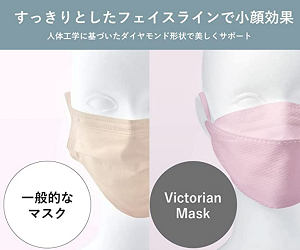Bottle-feeding is not easy, requiring mothers to learn and master many methods and knowledge to ensure their baby is always healthy. Therefore, if you are planning to have a baby, you should pay attention to the safety principles below.
1 / Check milk and feeding equipment before preparing
To ensure that bottles and nipples are always cleaned, carefully sterilized and in the best condition before breastfeeding your baby, mothers must regularly check them. Especially the nipple, if you find any tear, including a small crack, you should also replace it with a new one. Because the baby has to receive a higher amount of milk than usual, the risk of choking milk will be very high.
If using expressed breast milk, be careful to sterilize both the breast pump and check that the milk is not damaged before feeding the baby. If you are using formula, be sure to make sure you prepare the formula correctly. Wash your hands well before preparing formula and breastfeeding.

Do you know how to clean and preserve baby bottles? According to pediatric experts, the improper cleaning and disinfection of baby bottle feeding tools is very easy to affect the child's health. Therefore, the problem of sterilization, how to properly preserve the bottle is what mothers should learn when they want to let your baby use these items regularly.
2 / Check the milk temperature and operate the bottle upside down
It is best to feed your baby a bottle of cool or at room temperature. However, if your baby likes warm milk, you can also soak the bottle in a cup or hot water for 1 to 2 minutes. Do not use the microwave as this can burn your baby. Shake the bottle well and place a drop or two on the back of your hand to test the heat. Do not try it on the wrist, as the wrist is more heat resistant than the back of the hand.
Before breastfeeding, mothers should turn the bottle upside down to check the flow rate of the milk. The milk in the bottle flows out at the rate of one drop per second, if it is faster the mother should replace the other nipple. Newborn babies, especially premature or unstable babies, are suitable for small, slow-flow nipples.
3 / Correct posture when feeding the baby
Make sure mom's sitting position is comfortable. Use your elbow to raise the baby's head higher than the rest of the body, holding the bottle at an angle of 45 degrees from the baby's mouth. This method keeps the nipple full of milk and prevents the baby from swallowing air while eating while the flow is not too fast.
Mother must skillfully keep the baby's head straight and forward. Do not let your baby wiggle or tilt his head too much. Swallowing will be difficult for your baby if his head is tilted.
Absolutely do not give a bottle to a baby while lying down, lying on his side or on his back, as he may swallow too much gas or choke on the milk. Do not breastfeed when the baby fussy or stop immediately if the baby is fussy and wriggling too much because this can cause the baby to swallow the whole breath during the feeding, causing gastric reflux.

Do not put the teat directly into the baby's mouth when he is not ready.
4 / Let the baby latch on the nipple properly
Correct latching will help ensure that your baby is getting enough milk and not swallowing excess air and has a good habit of breastfeeding.
First, you need to teach your baby how to latch on. Touch and gently bring the nipple from the baby's lower lip to the nose, this will stimulate the baby to open wide. Then, insert the nipple into the baby's mouth, pointing the nipple toward the baby's palate. Your baby needs to be able to latch on to the entire nipple. However, it should be noted that do not let the baby feel stressed or uncomfortable, so gently place the nipple above, not under the baby's tongue.
You also have to pay attention to how your baby takes care from the very first bite. If your baby starts to swallow, stop feeding. Milk flow is too strong for the baby's suckling rate. So buy another pacifier for your baby, even if you've chosen it very carefully. A good nipple is the one that fits the baby best.
5 / Always keep the nipples full of milk while the baby is bottle feeding
Currently, on the market, there are many different sizes of nipples, mothers should choose a nipple suitable for the baby's age. Usually, the nipple plays a major role in regulating the flow of milk that your baby can suckle.
When feeding a bottle, always keep the bottle tilted slightly so that the nipple is full of milk, otherwise your baby may swallow the gas, making it very easy for the baby to vomit. The bottle should not be placed horizontally, as this will prevent the nipple from being filled with milk, causing the baby to suck in the air.
6 / Always monitor the baby while nursing
If your baby has been eating for a while and begins to show signs of boredom, latching, stop bottle feeding. Milk flowing too much while the baby refuses to swallow will lead to choking on the milk.
If your baby cries, soothe the baby to hold it off before continuing because if he cries while eating it will easily make the milk into the airway.
While your baby is suckling or holding food in his mouth, do not talk or make him laugh at his or her reaction to smiling, talking will clear the airway while his mouth continues to receive milk. Parents are therefore not allowed to be distracted even for a minute.
7 / Always burp the baby
While nursing, your baby needs time to rest and may need a burping patting for easy digestion. Especially if you find that your nursing baby becomes uncomfortable or fussy, stop feeding and puff your baby before continuing to feed.
When your baby releases the nipple and shows signs of fullness, you help him burp by holding the baby upright, placing his head on your shoulder and gently rubbing his back or patting his back. You can also put your baby half sitting half tummy on your lap and patting the back. Your baby can eat up a little milk, so you need to prepare a towel in advance. However, not all babies burp after a feed, so your baby is fine without these symptoms.

Babies don't always burp right after a feed, so don't be alarmed if your baby doesn't burp, mom!
In case the child vomits too much or vomits into a tornado, clean the nose and mouth thoroughly after the child vomits. Do not force the baby to continue feeding after vomiting or refluxing unless the baby shows signs of wanting to feed more. Check if the hole in the nipple is too big, too much milk flowing into the baby's mouth too quickly can cause vomiting and reflux.
After the burping is finished, hold the baby upright for a while and then put the baby down, nor sway, shake or play with the baby. Put your baby on his or her left side, hold the pillow slightly high for about 15 minutes before releasing the pillow and allowing him to lie in other positions.
8 / Note the excess milk
Don't forget to discard any leftover milk in the bottle, whether breastmilk or formula, after your baby is finished. With the mixed formula milk, if it is not used for more than 2 hours, it should be discarded for the sake of the child's health.
9 / Absolutely do not force children
You should know that each child has its own needs for the amount of food to eat. Therefore, if the baby does not want to breastfeed more, do not force it because it can cause the child's stomach to overload, causing vomiting or stomach reflux.

Mistakes when mixing breastmilk and formula milk Do you think that mixing breast milk and formula milk will your baby get richer nutrients? The results will make you very disappointed!
10 / Do not let your baby breastfeed alone
Absolutely do not let a child hold a bottle by himself because choking accidents can endanger the child's life. After breastfeeding is complete, always be mindful of your baby's symptoms.
In the unfortunate case of a child who is sucking or choking, the feeding, feeding and giving first aid should be immediately stopped. Mother needs to master the first aid procedures for babies to choke milk .
>> See more discussions on the same topic:
3 ways to help your baby burp slightly
How bottle-feeding is the right way















